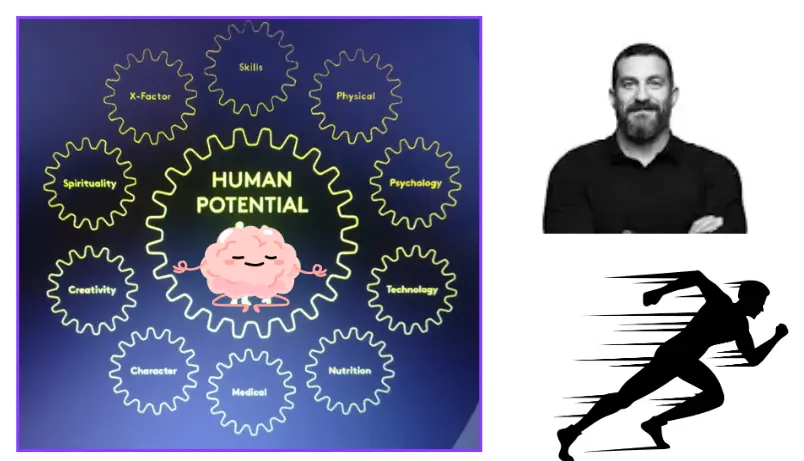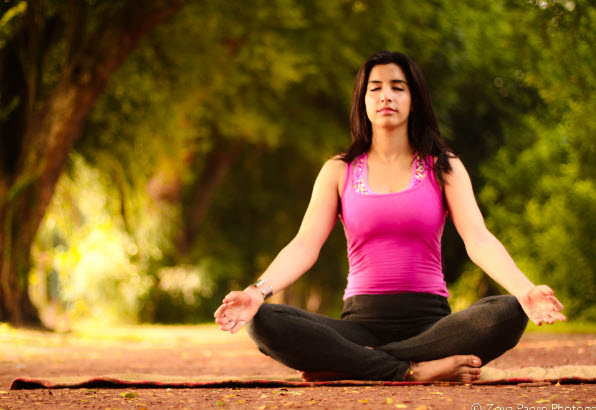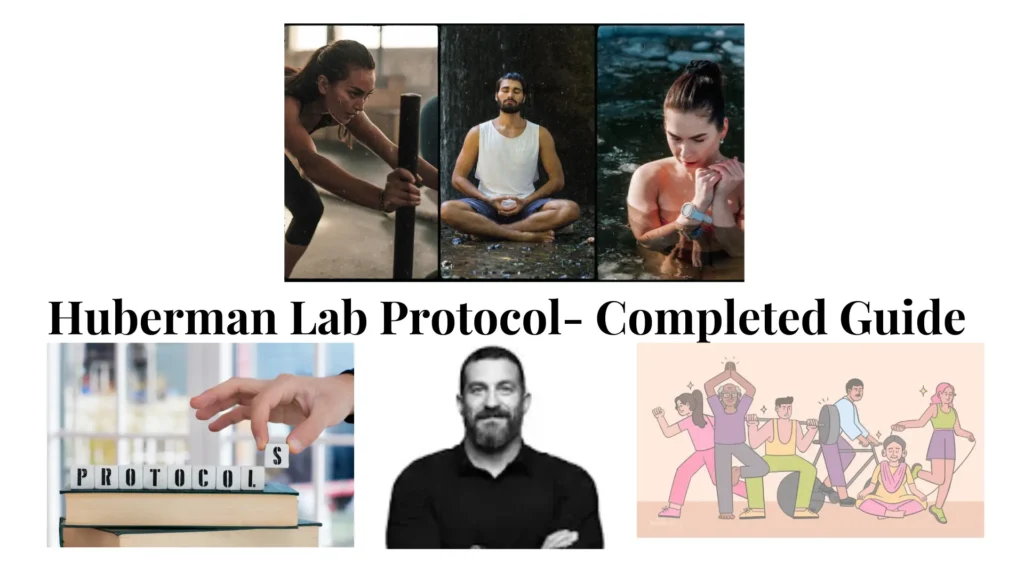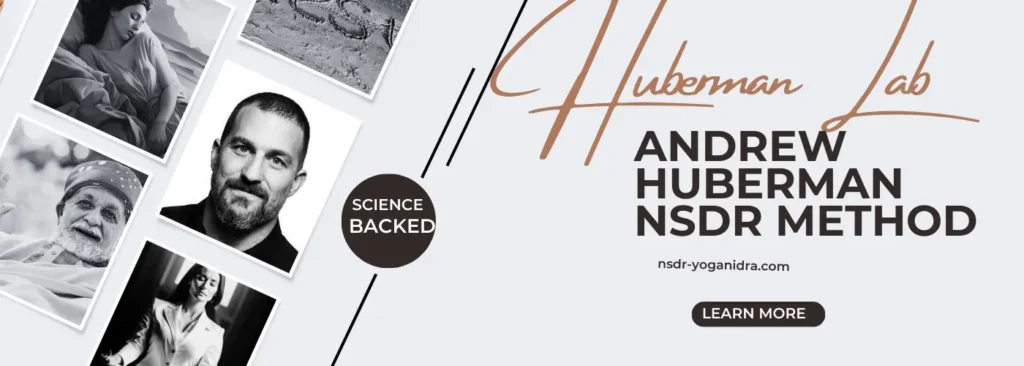Huberman Lab Non Sleep Deep Rest Protocol Explained
The Foundational Fitness Protocol, developed by Dr. Andrew Huberman, is a comprehensive guide to improving endurance, strength, and recovery.
Dr. Huberman, irrespective of the recent controversy surrounding him has been celebrated for his groundbreaking research on brain function and health optimization. The Huberman protocol is science-based manual to integrate cardio, resistance training, and the powerful benefits of heat and cold exposure—all aimed at maximizing your fitness.
Backed by scientific principles and published in reputable journals, this plan not only enhances strength and cardiovascular health but also speeds up recovery and helps prevent injuries through effective neck and posture training.
You can download the PDF document here
| Day | Description |
|---|---|
| Day 1: Long Endurance Workout (Sunday) | Kickstart your week with Zone 2 Cardio: 30-75 minutes of cardio, breathing faster but able to maintain conversation. Goal: 180-200 minutes per week. |
| Day 2: Legs Resistance Training (Monday) | Warmup: 10 minutes, followed by 50-60 minutes of training targeting quadriceps, hamstrings, and calves. Alternate heavy and moderate-lighter weights. |
| Day 3: Heat & Cold Exposure Recovery (Tuesday) | Recovery: 20 minutes of sauna followed by 5 minutes of cold exposure, repeat 3-5 times. Improves recovery and endurance. |
| Day 4: Torso & Neck Resistance Training (Wednesday) | Focus on chest, back, shoulders, and neck. Essential for posture correction. 50-60 minutes of resistance training. |
| Day 5: Cardiovascular Training (Thursday) | 35 minutes of moderate-intensity cardio. 75-80% effort using running, cycling, or jumping exercises, ideally outdoors. |
| Day 6: High-Intensity Interval Training (HIIT) (Friday) | 20-60 seconds of all-out sprint followed by 10 seconds rest, 8-12 rounds. Aim for maximum heart rate (220 minus age). |
| Day 7: Arms, Neck, and Calves Training (Saturday) | Focus on arms, neck, and calves. 50-60 minutes targeting biceps, triceps, calves. Neck exercises for posture. |
For a detailed workout , scroll towards the bottom

An important aspect highlighted by Huberman in optimal well-being, we often overlook the power of rest. The Huberman Lab Non Sleep Deep Rest protocol has emerged as a game-changer in the realm of relaxation techniques. This innovative approach, combines scientific insights with practical strategies to enhance our mental clarity, boost cognitive function, and improve overall sleep quality. I’ve found that incorporating these non sleep deep rest techniques into our daily routines ( like that 10 minutes afternoon rest) can have a profound impact on our dopamine baseline and neuroplasticity.
Throughout this article, we’ll dive into the evolution of non sleep deep rest and break down the key components of the Huberman Lab NSDR protocol. We’ll explore how NSDR meditation compares to other relaxation methods like body scans and transcendental meditation. We’ll also share tips on how to make the most of NSDR, including when to do it and how to combine it with other practices like morning sunlight exposure for sleep optimization. By the end, you’ll have a clear understanding of what non sleep deep rest is and how to use these Huberman Lab protocols to enhance your mental and physical well-being.
Table of Contents
- Huberman Lab Non Sleep Deep Rest (NSDR) Protocol Explained
- The Foundational Fitness Protocol
- Andrew Huberman Workout Plan
- Heat & Cold Exposure Recovery
- Key Components of NSDR
- NSDR vs. Other Relaxation Techniques
- Maximizing the Benefits of NSDR
- My Personal Takeaway from Huberman Protocol
- FAQs


The Evolution of Non-Sleep Deep Rest
Historical context
The roots of non sleep deep rest techniques can be traced back centuries to the ancient practice of yoga nidra. This meditation technique, which translates to “yogic sleep” in Sanskrit, was designed to guide the body into a state of complete and conscious relaxation. Yoga nidra gained prominence in the West during the 20th century when Swami Satyananda Saraswati introduced it, incorporating elements of tantra, yoga, and meditation.
In the 1970s, physician Richard Miller began researching the effects of yogic sleep on reducing stress and improving health, which led to wider recognition of these practices. Since then, yoga nidra has evolved into new forms like NSDR that emphasize entering a sleep-like state while remaining fully conscious and in control. The goals of these practices remain similar – to relax the nervous system, integrate mind and body, and tap into inner resources for healing.
Current applications
Today, NSDR has found applications in various aspects of our lives. It’s been shown to be particularly beneficial for restoring cognitive and physical vigor, aiding in learning, and even compensating for lack of sleep. People struggling with sleep disturbances, anxiety, or self-regulation issues have found NSDR to be an effective tool.
Research has demonstrated that specific NSDR protocols, like yoga nidra, can boost dopamine levels in the brain by up to 60% 1. This increase in dopamine can enhance motivation and cognitive control, making NSDR a valuable tool for education and personal development. Moreover, NSDR has shown promise in clinical settings, helping individuals with addiction by promoting better impulse control and aiding sleep.
The accessibility of NSDR is one of its key strengths. These practices are usually free and can be found easily online, making them available to a wide audience without financial barriers. This accessibility, combined with the growing body of research supporting its benefits, has led to NSDR gaining popularity among tech CEOs, wellness influencers, and individuals seeking quick recovery in demanding lifestyles.
Key Components of the Huberman Lab NSDR Protocol
The Huberman Lab Non Sleep Deep Rest (NSDR) protocol is a powerful relaxation technique that combines specific breathing patterns, body scanning, and visualization exercises to guide individuals into a state of deep relaxation and heightened awareness. This unique method helps shift the body from the sympathetic nervous system (responsible for the ‘fight-or-flight’ response) to the parasympathetic nervous system, which promotes relaxation and restoration.
Breathing techniques based on Huberman Lab
One of the core elements of the NSDR protocol is controlled breathing. Dr. Huberman emphasizes the importance of long exhale breathing, which has been shown to slow down heart rate and enhance relaxation. Here’s a simple breathing exercise to try:
- Inhale deeply through your nose, filling your lungs completely.
- Exhale slowly through your mouth, pursing your lips as if blowing through a small straw.
- Focus on making your exhale longer than your inhale.
This breathing pattern helps activate the parasympathetic nervous system, promoting a sense of calm and relaxation. By practicing this technique regularly, you can learn to control your nervous system and improve your overall state of mind.
Body scan methods
Body scanning is another crucial component of the NSDR protocol. This technique involves systematically focusing your attention on different parts of your body, helping to release physical tension and deepen your relaxation state. Here’s a basic body scan method:
- Start by focusing on your feet, noticing any sensations or tension.
- Gradually move your attention up through your body, including your legs, abdomen, chest, arms, and head.
- As you focus on each area, consciously try to relax those muscles.
This practice not only helps you become more aware of your body but also promotes physical relaxation, which can lead to improved sleep quality and reduced stress.
Visualization exercises
The final key component of the Huberman Lab NSDR protocol involves visualization exercises. These mental practices can help calm the mind and enhance the overall relaxation experience. A simple visualization technique to try is:
- Imagine yourself in a peaceful, comfortable setting (e.g., a beach or forest).
- Focus on the details of this imaginary environment, engaging all your senses.
- As you breathe deeply, picture yourself becoming more relaxed in this setting.
By incorporating these three components – breathing techniques, body scanning, and visualization exercises – into your daily routine, you can experience the full benefits of the Huberman Lab NSDR protocol. This practice can help boost your dopamine levels, enhance mental clarity, and improve overall cognitive function. Remember, consistency is key when it comes to reaping the rewards of NSDR meditation.
NSDR vs. Other Relaxation Techniques
Non-sleep deep rest (NSDR) is a powerful tool that allows us to control the relaxation state of our nervous system and overall state of mind. While it shares similarities with other relaxation techniques, NSDR has unique aspects that set it apart. Let’s explore how NSDR compares to meditation and traditional hypnosis, and what makes it special.
Comparison with meditation
Both NSDR and meditation aim to achieve mental clarity and inner peace. However, they differ in their approach and focus. Meditation often involves sitting upright, which promotes alertness and concentration. In contrast, NSDR is typically performed lying down in a comfortable position, facilitating a deeper state of relaxation while maintaining awareness.
Meditation practices generally emphasize self-guided focus on breath, a mantra, or silent observation. NSDR, on the other hand, is often guided, with a voice leading you through relaxation techniques and into the subconscious. This guided nature of NSDR makes it more accessible for beginners who might struggle with the concentration required in traditional meditation.
Differences from traditional hypnosis
While NSDR and hypnosis both work to create shifts beneath the surface of the conscious mind, there are notable differences. Hypnosis often focuses on changing specific limiting behaviors, whereas NSDR aims to help individuals realize and rest in their true nature beyond conditioned boundaries.
Interestingly, recent research suggests that during NSDR, individuals may actually pass through a state similar to hypnosis on their way to whole brain activity. Before reaching a state of whole brain activity, NSDR practitioners first shift to more right brain activity, which is associated with hypnosis. However, NSDR is designed to move beyond this into deeper states of meditation.
Unique aspects of NSDR
One of the key components that makes NSDR stand out is its impact on the brain. NSDR practices can lead to changes in brain wave patterns, particularly an increase in alpha and theta waves, which are associated with deep relaxation and heightened creativity 1. This brain state is distinct from the deep sleep state and offers unique restorative benefits.
NSDR combines elements of guided meditation and deep relaxation, focusing on reaching a deep rest state without falling asleep. It often uses specific techniques like body scans and focused breathing, distinguishing it from more general relaxation methods. These techniques help stimulate whole brain activity, creating a balanced condition of the mind.
Another unique aspect of NSDR is its ability to boost dopamine levels in the brain. Some research has shown that specific NSDR protocols, like yoga nidra, can increase dopamine levels by up to 60% 2. This increase in dopamine can enhance motivation and cognitive control, making NSDR a valuable tool for education and personal development.
In conclusion, while NSDR shares some similarities with meditation and hypnosis, it offers a unique combination of benefits. Its guided nature, focus on whole brain activity, and potential to boost dopamine levels make it a powerful tool for relaxation, cognitive enhancement, and overall well-being.
Maximizing the Benefits of NSDR
To get the most out of non sleep deep rest techniques, it’s crucial to integrate them effectively into our daily routines. By doing so, we can enhance our overall well-being, boost our cognitive function, and manage stress more effectively. Let’s explore some strategies to maximize the benefits of NSDR.
Integrating NSDR with exercise routines
Incorporating NSDR into our exercise regimen can have a significant impact on our physical and mental performance. While there’s limited research on using NSDR immediately before workouts, we can experiment with different timings to see what works best for us. For instance, we might try a short NSDR session after our workout to help our body and mind recover more effectively.
The physiological sigh, a technique often used in NSDR, can be particularly beneficial when integrated with exercise. This breathing method involves a double inhale followed by a long exhale, which can quickly reduce stress levels and help us regain focus during or after intense physical activity 1.
Using NSDR for learning enhancement
One of the most exciting applications of NSDR is its potential to boost our learning capabilities. Research suggests that short NSDR sessions, typically around 20 minutes, can significantly improve our ability to retain information when practiced after a learning period 2. This makes NSDR an invaluable tool for students, professionals, or anyone looking to enhance their cognitive performance.
By leveraging the brain’s natural cycles for optimal learning and recall, we can use NSDR to accelerate neuroplasticity and improve our memory retention. For example, after studying a new subject or learning a new skill, we might engage in a guided NSDR session to help consolidate that information in our brain.
NSDR for stress management
In our fast-paced world, effective stress management is crucial for maintaining our mental and physical health. NSDR offers a powerful, accessible tool for managing daily stress and anxiety. By incorporating NSDR practices into our routine, ideally for about 10-30 minutes daily, we can reset our stress levels and improve our overall mental and physical vigor .
The beauty of NSDR lies in its versatility. We can practice it any time of day or night when we feel the need for a mental or physical reset. Whether we’re dealing with work-related stress, personal challenges, or simply need a moment of calm, NSDR can help us shift our focus from active thinking to a state of deep relaxation.
Moreover, regular practice of NSDR can improve our ability to fall asleep and stay asleep, enhancing our overall sleep quality. This, in turn, can have a positive ripple effect on our stress levels and overall well-being.
By integrating these strategies into our daily lives, we can harness the full potential of non sleep deep rest. Whether we’re looking to enhance our physical performance, boost our learning capabilities, or manage our stress more effectively, NSDR offers a versatile, science-backed approach to improving our overall quality of life.
My personal take-away from Huberman protocol
The Huberman Lab Non Sleep Deep Rest protocol is based in science. Ideas like NSDR is a more practical and modernized version of Yoga Nidra. Currently there is a lot of controversy surrounding him, but his research of Deep rest, sunlight exposure, hot and cold therapy definitely can improve life exponentially. What Huberman has done is make a powerful tool/protocol which is easy to follow and take in to physical and mental well being and also recovery.
By combining scientific insights with practical strategies, this approach provides a unique way to tap into our body’s natural relaxation mechanisms. What’s more, its versatility allows for easy integration into various aspects of our lives, from exercise routines to learning enhancement and stress management.
Since our blog is all about deep rest and rejuvenation, the NSDR pracitce has been revolutionary and I have deep dived in to this. Huberman NSDR due to its guided nature and potential to increase dopamine levels is a good practice to help with rest, and stress management. Its ability to promote whole brain activity and induce deep relaxation without sleep makes it a valuable addition to our daily routines ( Side Note: Yoga Nidra has always been there, Huberman just marketed this better.)
Please do consider joining our NSDR WhatsApp Group focused on the Huberman Protocol. In the end, incorporating NSDR into our lives can lead to improved mental and physical health, paving the way for a more balanced and fulfilling lifestyle.
FAQs
What is the method for practicing non-sleep deep rest (NSDR)? To engage in NSDR, begin by locating a tranquil and comfortable environment. Settle into a cozy position and set a clear intention for your session. You can use a guided NSDR or yoga nidra recording to assist you. Throughout the practice, relax your body, follow the breathing and visualization instructions, maintain your awareness, and stay present until you conclude the practice.
How much time is required for an effective non-sleep deep rest session? A session of non-sleep deep rest typically lasts about 10 minutes. This brief period is sufficient to induce a state of deep relaxation similar to sleep, yet you remain conscious, which leaves you feeling both relaxed and rejuvenated.
Can you explain what non-sleep deep rest, as developed by Huberman, entails? Non-sleep deep rest, or NSDR, is a concept developed by Andrew Huberman. It includes various techniques aimed at enhancing brain and body functionality by shifting towards a state of deep relaxation without actual sleep. NSDR may incorporate practices like meditation, yoga nidra, and hypnosis to achieve these effects.
Is it possible for non-sleep deep rest to substitute for sleep? While non-sleep deep rest is beneficial for reducing stress and enhancing focus, it does not provide the same restorative benefits as a full night’s sleep. To practice NSDR, find a quiet spot, close your eyes, and concentrate on deep breathing and relaxation techniques to enter into this state of rest.
References
[1] – https://ai.hubermanlab.com/s/Vjs78KUx
[2] – https://www.youtube.com/watch?v=hEypv90GzDE
DETAILED WORKOUT SUMMARY OF ANDREW HUBERMAN
Day 1: Long Endurance Workout (Sunday)
Kickstart your week with Zone 2 Cardio:
- Duration: Aim for 30-75 minutes of Zone 2 cardio (work up to it if you’re a beginner).
- Intensity: Breathing faster than usual, but still able to maintain a conversation.
- Goal: 180-200 minutes of Zone 2 cardio per week.
- Examples: Jogging, cycling, swimming, or hiking. Increase the difficulty by wearing a weighted vest or backpack. Focus on nasal breathing for optimal benefits.
Day 2: Legs Resistance Training (Monday)
Build strength in your lower body:
- Warmup: 10-minute warmup.
- Training Duration: 50-60 minutes.
- Muscle Groups: Quadriceps, hamstrings, and calves.
- Exercises:
- Quadriceps: Leg extensions, hack squats.
- Hamstrings: Leg curls, glute-ham raises.
- Calves: Standing calf raises, seated calf raises.
- Exercises:
Alternate between Schedule A (4-8 repetitions, heavier weights) and Schedule B (8-15 repetitions, moderate-lighter weights) each month for variety and progressive overload.
Day 3: Heat & Cold Exposure Recovery (Tuesday)
Recovery is just as crucial as training. Start incorporating heat and cold exposure:
- Routine: 20 minutes in the sauna followed by 5 minutes of ice bath or cold shower. Repeat this 3-5 times.
- Benefits: This technique can accelerate recovery, improve endurance, and enhance overall performance.
- Start slowly and work up to the full protocol over time.
- Explore more on heat exposure here.
- Learn more about cold exposure benefits here.
Day 4: Torso & Neck Resistance Training (Wednesday)
Don’t overlook your torso and neck:
- Warmup: 10-minute warmup.
- Training Duration: 50-60 minutes.
- Muscle Groups: Chest, back, shoulders, and neck.
- Exercises:
- Chest: Incline press, cable crossover.
- Back: Chin-ups, pull-ups, seated rows, or dumbbell rows.
- Shoulders: Shoulder press, lateral raises, rear deltoid flies.
- Neck Training: Essential for injury prevention and posture correction. Watch this video on neck exercises.
- Exercises:
Day 5: Cardiovascular Training (Thursday)
Boost your cardiovascular health:
- Duration: 35 minutes of moderate-intensity cardio.
- Intensity: 75-80% of your maximum effort.
- Examples: Running, rowing, cycling, jumping jacks, stair climbing, or jump rope—ideally outdoors.
Day 6: High-Intensity Interval Training (HIIT) (Friday)
Push your limits with HIIT:
- Routine: 20-60 seconds of all-out sprint followed by 10 seconds of rest, for 8-12 rounds.
- Heart Rate: Aim for maximum heart rate (220 minus your age).
- Examples: Assault bike, sprint/jog intervals, rowing, or skiing machine.
- Tip: Choose exercises you can perform with perfect form to avoid injury.
Day 7: Arms, Neck, and Calves Training (Saturday)
Focus on your arms, neck, and calves:
- Warmup: 10-minute warmup.
- Training Duration: 50-60 minutes.
- Muscle Groups: Biceps, triceps, calves, and neck.
- Exercises:
- Biceps: Incline curls, dumbbell curls.
- Triceps: Overhead extensions, tricep dips, or regular dips.
- Calves: Standing calf raises, seated calf raises, tibialis raises.
- Neck: Neck exercises video.
- Exercises:
Training Schedules for Resistance Workouts
- Schedule A: 4-8 repetitions (heavier weights) with 3-4 sets per exercise. Take 2-4 minutes of rest between sets.
- Schedule B: 8-15 repetitions (moderate-lighter weights) with 2-3 sets per exercise. Take 90 seconds of rest between sets.


